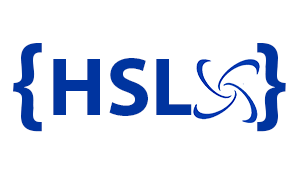A brief overview of ML algorithms and their uses
High Score Labs News • Jan 20, 2020
In this article we are going to look into the basic types/categories of machine learning and how each type works and what it could be used for. In general, there are 3 types of machine learning algorithms:
– Supervised learning
– Un supervised learning
– Reinforced learning
Supervised learning
This type of machine learning involves more directed operation of the algorithm, essentially a ‘connect the dots’ exercise. As the person using this type of algorithm, you would specify what kind of information it is going to process, what type of results you want back, etc. Where would this be useful? Generally, these types of algorithms are used for problems where you have a dataset but want to make some predictions about specific outcomes based on your existing information. The more common uses are classification and regression. Classification is the process of training the algorithm with existing data (careful not to overfit) so that it can recognize patterns, objects or specific attributes, etc. Regression is the process of predicting outcomes of continuous data, i.e., things like stock price, heights of patients measured, widths, etc. Some of the more well-known algorithms are: Artificial neural networks, linear regression, decision trees, etc. Applications for supervised learning are very common in lines of business where one has data from the market or company financials and need to assess trends and make forecasts for sales, for example. It is also applicable to many scientific fields as much of science is collecting large amounts of data from experiments and then trying to prove or disprove an existing hypothesis or modify an existing theory.
An example of regression

(source)
An example of classification

(source)
Unsupervised learning
This is the opposite of supervised learning. As such, the intent is to use this when the data is not well known, and you need something that can sift through data and make sense of it. This is why, unlike supervised learning which requires data to be labeled, unsupervised algorithms feed on unlabeled data. Two main methods are used: clustering and dimensionality reduction. Clustering is when the algorithm is able to find commonalities with unlabeled data and then attempt to sort them into groups. Dimensionality reduction is useful when data is a bit noisy, meaning that there is junk data present that can mask the useful data points that may exist. Some examples of commonly used algorithms are: k-means, association rule, Principle component analysis, etc. Some uses for these algorithms in today’s world would commonly found in online digital marketing, since especially clustering, is useful for personalization systems, ad targeting and even generating reports that groups otherwise unknown people into classified groups based on how they interact with your content. One example would be Salesforce more here , which is a big implementer of this methodology, another example would be Episerver (more here), which also utilizes many of the same algorithms to drive online engagement.
k-means clustering

(Source)
PCA

(Source)
Reinforcement learning
This process is more along the ‘AI’ side of things. It operates on a methodology of exploration/exploitation. What this means is that it will learn by ‘failing faster’, in that when it makes a mistake, it will experience a programmatic/mathematical punishment and will receive the opposite reward when it makes the correct choice. Then through a process of wins and losses, it will gradually become better at its intended purpose. Some common algorithms that represent this are: Q-learning, monte carlo tree search, etc. Common uses for this type of machine learning algorithm are for video games, which respond to how the user interacts with the various characters in the game. Another example are self-driving cars. Finally, another common use is to boost the effectiveness of natural language processing features commonly found on chat bots, interpreting input from a human and then processing that and adapting accordingly.
There algorithms that can be used for almost every business case. Interestingly enough, when research some facts for this article, I found this article from Microsoft that is a cheat sheet that maps common problems to solve with machine learning algorithms.







